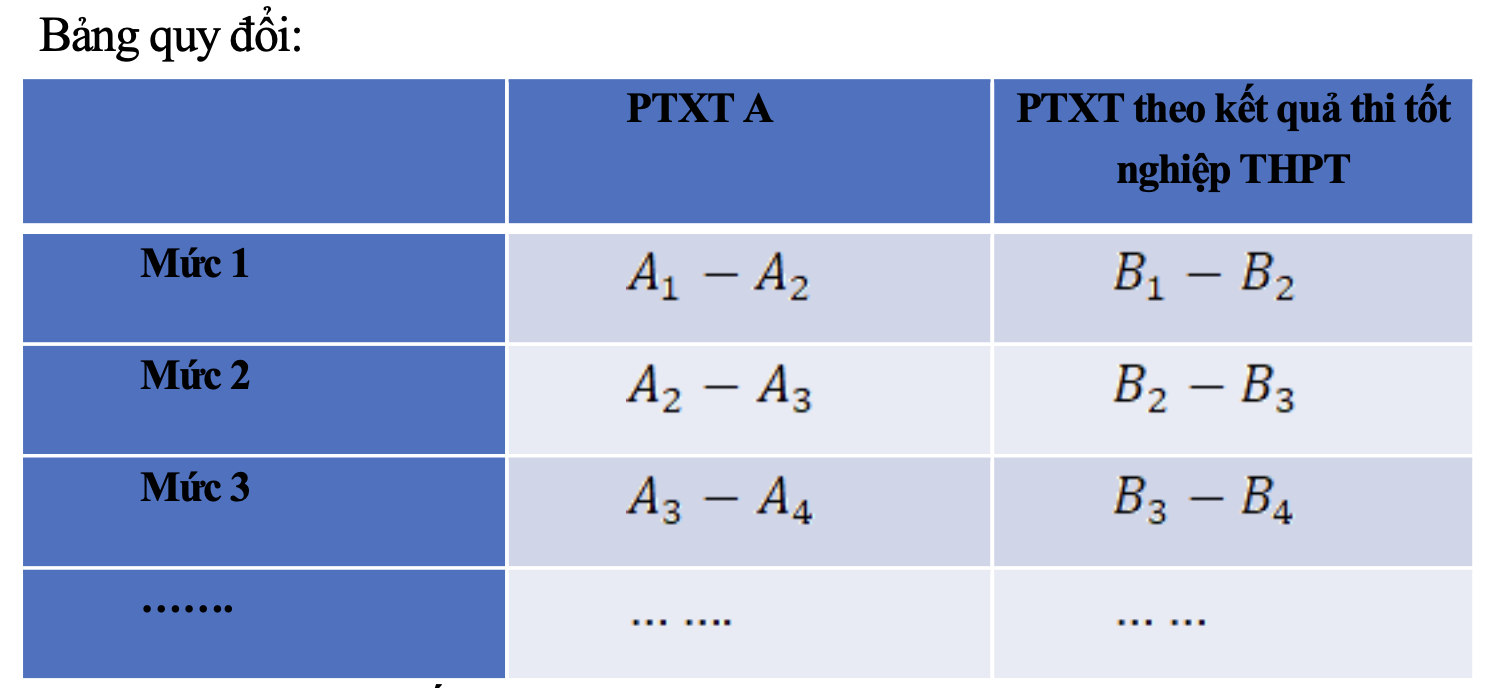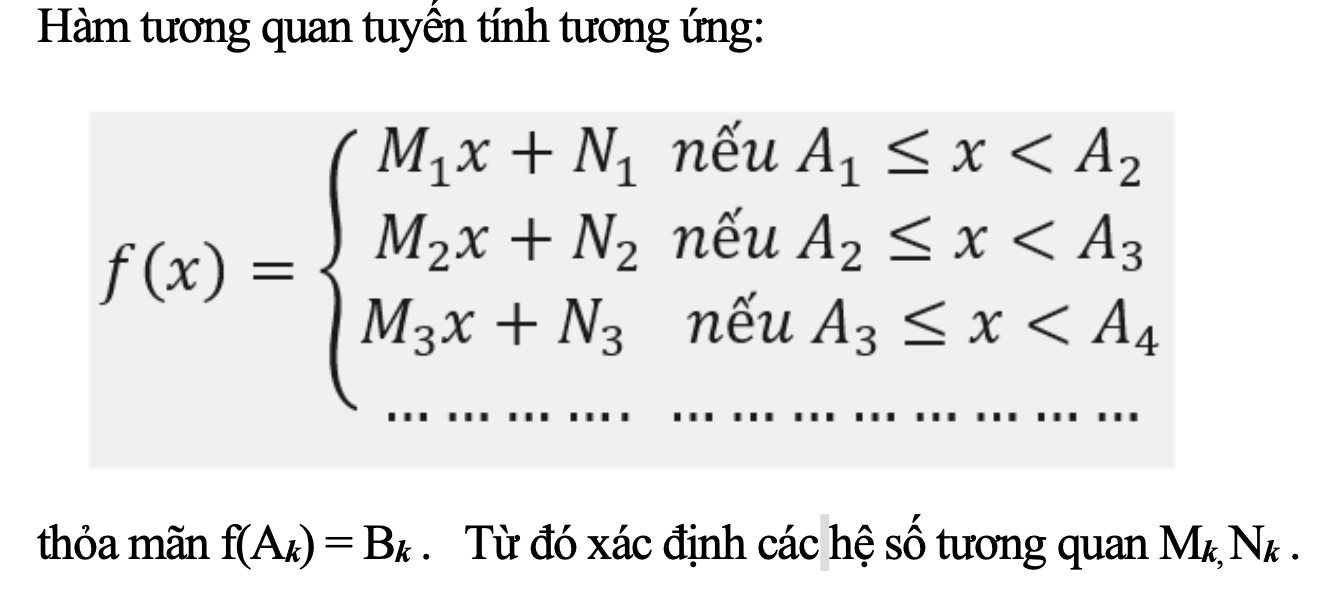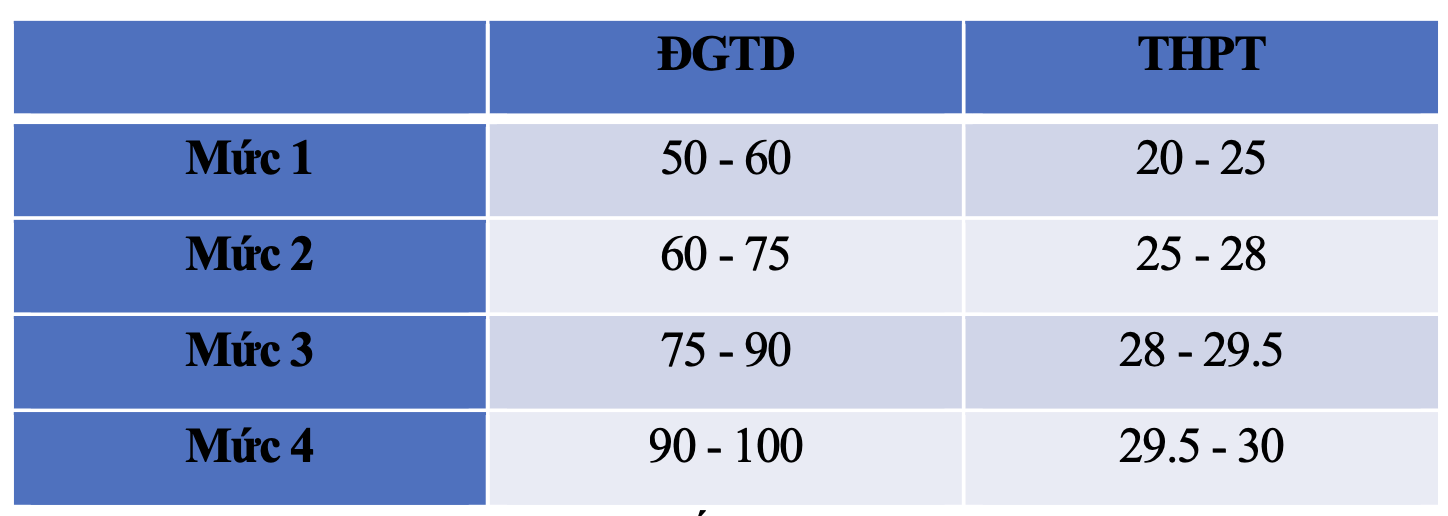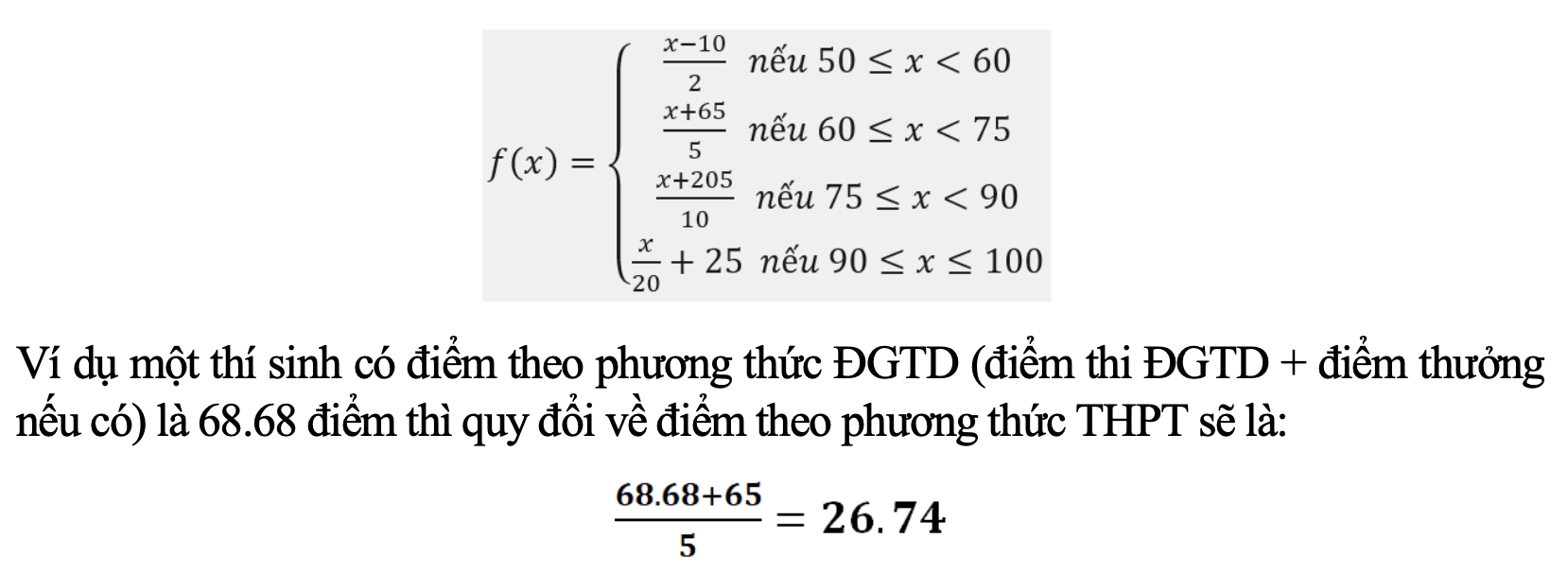The draft guidelines for university admissions in 2025 of the Ministry of Education and Training has provided a formula for converting university admission scores in 2025.
Formula for converting university admission scores in 2025
According to the Ministry of Education and Training, in the 2025 university entrance exam, schools will be allowed to use many admission methods and must develop rules for converting equivalent entrance thresholds and admission scores to ensure compliance with the Admissions Regulations. The method of converting equivalent scores must be simple, ensuring the selection of candidates who best meet the entrance requirements of the training program, major, and group of majors.
The Ministry of Education and Training said that the score conversion rules use high school graduation exam score data (or high school learning results data) as the basis. In addition, schools base on statistical data, analyze the learning results of students who have been admitted according to the combinations of previous years and on the basis of analyzing the correlation between the learning results at the school, the score distributions of the admission methods of the same group of candidates.
The formula for converting university admission scores drafted by the Ministry of Education and Training is as follows:


Example 1: Analyzing the results of the same group of candidates using the 2024 high school graduation exam results and the academic transcript results (6 semesters) according to 5 traditional groups; based on the assessment of students' academic results in previous years, it shows that: good and excellent candidates account for 30% of the total number of admitted candidates, corresponding to the high school graduation exam results of 24.75 and the academic transcript score of 25.75; good and above candidates account for 80% of the total number of candidates, the corresponding high school graduation exam results are 20.5 and the academic transcript score of 22.0; the rest are at the passing level.
Accordingly, schools can use the scores (24.75; 25.75); (20.5; 22) along with the threshold score to ensure input quality and the maximum score of the assessment scale (30; 30) to linearize each region and establish a formula (first-degree equation form) to convert the equivalent admission score between the two methods.

A candidate A has a grade point average of 23 and will be converted to the original method scale score, which is the method based on high school graduation exam scores, as follows:

In addition, it can be seen that the difference in scores (6-semester report card scores and high school graduation exam scores) fluctuates between 1.0 - 1.5 points for this group of candidates.
Example 2: Equivalent conversion of admission scores between the admission method using the results of the thinking assessment test and the admission method using the results of the high school graduation exam.
Based on the analysis of academic score data, thinking assessment test scores and high school graduation exam scores of the same group of candidates at University A, a conversion table was created:

From there, the linear correlation function for each region is determined as follows:

"Thus, schools do not have to allocate quotas for admission methods to avoid risks when considering admission according to the quotas of each method such as the difference in scores between methods being too large, some methods have very high admission scores, admission scores based on transcripts are lower than admission scores based on high school graduation exam results, etc.
In addition, to ensure that candidates have full information during the application process, the Regulations stipulate that the equivalence conversion rules must be publicly announced at the latest at the same time as the admission quality assurance threshold is announced.
Candidates do not need to choose a method code, combination code... they just need to clearly identify the program, major, training group and training institution they want to study to decide to register. The general enrollment support system of the Ministry of Education and Training will use the method with the highest result of the candidate for admission consideration," said the Ministry of Education and Training.

Candidates attend the 2025 admissions consultation day. Photo: Tao Nga
Units that organize their own exams will proactively convert scores.
Sharing with Dan Viet newspaper reporters, representatives of many universities said it was not too difficult to convert to a common score scale in this year's admissions.
According to Master Nguyen Quang Trung, Deputy Head of Communications and Admissions Department, University of Commerce, the admission score calculation formula of the methods is carefully calculated to ensure fairness for candidates.
"The school based on the benchmark scores of the last 3 years, compared them with the academic results of candidates admitted by these methods and found similarities. This is the data to calculate and come up with the admission formula for 2025," said Mr. Trung.
Dr. Than Thanh Son, Head of Training Department, Hanoi University of Industry, assessed that the school did not find it difficult to convert the 30-point scale. The school used the exam results of Hanoi University of Science and Technology, Hanoi National University and this unit will provide a conversion scale for schools to apply.
According to Dr. Do Viet Tuan, Deputy Head of the Faculty of Information Technology and Communication, Academy of Educational Management: "If we want to convert equivalent scores, it will be easier for the units organizing the separate exams to proactively convert the scores than for the universities to convert their own scores. This way of converting scores will be more beneficial for easier methods such as considering transcripts and more disadvantageous for candidates participating in difficult methods such as assessing capacity and assessing thinking."
Source: https://danviet.vn/cong-thuc-quy-doi-thang-diem-chung-xet-tuyen-dai-hoc-dat-muc-nao-moi-duoc-30-diem-20250329165435859.htm







![[Photo] Visiting Cu Chi Tunnels - a heroic underground feat](https://vstatic.vietnam.vn/vietnam/resource/IMAGE/2025/4/8/06cb489403514b878768dd7262daba0b)









































































Comment (0)